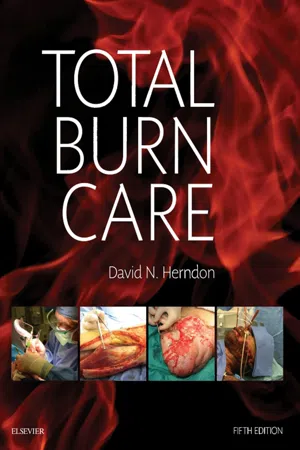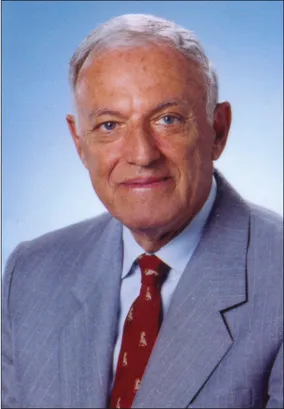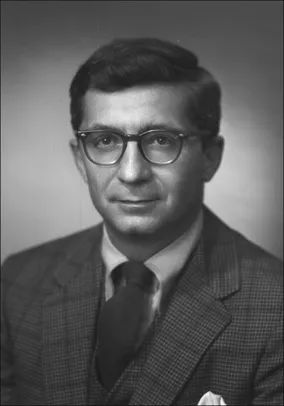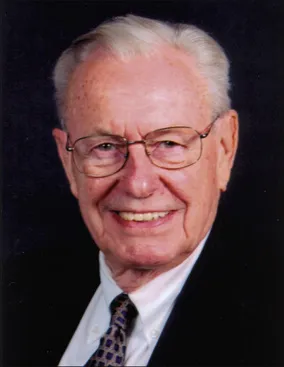
- 812 pages
- English
- ePUB (mobile friendly)
- Available on iOS & Android
Total Burn Care E-Book
About this book
Recent advances in research have resulted in tremendous changes in burn management. Stay fully up to date with the new edition of Total Burn Care, by leading authority Dr. David N. Herndon. Detailed procedural guidelines walk you through every step of the process, from resuscitation through reconstruction and rehabilitation. Everyone on the burn care team, including general and plastic surgeons, intensivists, anesthestists, and nurses, will benefit from this integrated, multidisciplinary guide to safe and effective burn management.- Discusses infection control, early burn coverage, occupational physical exercise, respiratory therapy, and ventilator management.- Summarizes key points at the beginning of each chapter for quick reference.- Uses an integrated, team approach to help you meet the clinical, physical, psychological, and social needs of every patient.- Offers expert guidance on early reconstructive surgery and rehabilitation, with new content on improved surgical techniques.- Provides access to 15+ procedural operative videos and PowerPoint presentations on topics ranging from alopecia and anesthesia to radiation and treatment of infection – ideal for teaching and presenting.- Covers special populations such as elderly and pediatric patients, and includes a new chapter on burns in pregnancy.- Expert Consult™ eBook version included with purchase. This enhanced eBook experience allows you to search all of the text, figures, and references from the book on a variety of devices.
Frequently asked questions
- Essential is ideal for learners and professionals who enjoy exploring a wide range of subjects. Access the Essential Library with 800,000+ trusted titles and best-sellers across business, personal growth, and the humanities. Includes unlimited reading time and Standard Read Aloud voice.
- Complete: Perfect for advanced learners and researchers needing full, unrestricted access. Unlock 1.4M+ books across hundreds of subjects, including academic and specialized titles. The Complete Plan also includes advanced features like Premium Read Aloud and Research Assistant.
Please note we cannot support devices running on iOS 13 and Android 7 or earlier. Learn more about using the app.
Information
A Brief History of Acute Burn Care Management



Early Excision



Skin Grafting
Table of contents
- Cover image
- Title Page
- Table of Contents
- Copyright
- Preface
- In Memorium of Ted Huang, MD
- List of Contributors
- Video Table of Contents
- List of Video Contributors
- 1 A Brief History of Acute Burn Care Management
- 2 Teamwork for Total Burn Care
- 3 Epidemiological, Demographic and Outcome Characteristics of Burns
- 4 Prevention of Burn Injuries
- 5 Burn Management in Disasters and Humanitarian Crises
- 6 Care of Outpatient Burns
- 7 Prehospital Management, Transportation, and Emergency Care
- 8 Pathophysiology of Burn Shock and Burn Edema
- 9 Burn Resuscitation
- 10 Evaluation of the Burn Wound
- 11 Treatment of Infection in Burn Patients
- 12 Operative Wound Management
- 13 Anesthesia for Burned Patients
- 14 The Skin Bank
- 15 Skin Substitutes and ‘the next level’
- 16 The Pathophysiology of Inhalation Injury
- 17 Diagnosis and Treatment of Inhalation Injury
- 18 Respiratory Care
- 19 The Systemic Inflammatory Response Syndrome
- 20 Host Defense Antibacterial Effector Cells Influenced by Massive Burns
- 21 Biomarkers in Burn Patient Care
- 22 Hematology, Hemostasis, Thromboprophylaxis, and Transfusion Medicine in Burn Patients
- 23 Significance of the Hormonal, Adrenal, and Sympathetic Responses to Burn Injury
- 24 The Hepatic Response to Thermal Injury
- 25 Importance of Mineral and Bone Metabolism after Burn
- 26 Micronutrient Homeostasis
- 27 Hypophosphatemia
- 28 Nutritional Needs and Support for the Burned Patient
- 29 Modulation of the Hypermetabolic Response after Burn Injury
- 30 Etiology and Prevention of Multisystem Organ Failure
- 31 Acute Renal Failure in Association with Thermal Injury
- 32 Critical Care in the Severely Burned
- 33 Burn Nursing
- 34 Care of the Burned Pregnant Patient
- 35 Special Considerations of Age
- 36 Care of Geriatric Patients
- 37 Surgical Management of Complications of Burn Injury
- 38 Electrical Injuries
- 39 Cold-Induced Injury
- 40 Chemical Burns
- 41 Radiation Injuries and Vesicant Burns
- 42 Exfoliative Diseases of the Integument and Soft Tissue Necrotizing Infections
- 43 Burn Injuries of the Eye
- 44 The Burn Problem
- 45 Molecular and Cellular Basis of Hypertrophic Scarring
- 46 Pathophysiology of the Burn Scar
- 47 Burn Rehabilitation Along the Continuum of Care
- 48 Musculoskeletal Changes Secondary to Thermal Burns
- 49 Reconstruction of Bodily Deformities in Burn Patients
- 50 Reconstruction of the Head and Neck after Burns
- 51 Management of Postburn Alopecia
- 52 Trunk Deformity Reconstruction
- 53 Management of Contractural Deformities Involving the Shoulder (Axilla), Elbow, Hip, and Knee Joints in Burned Patients
- 54 Acute and Reconstructive Care of the Burned Hand
- 55 Management of Burn Injuries of the Perineum
- 56 Reconstruction of Burn Deformities of the Lower Extremity
- 57 Electrical Injury
- 58 The Role of Alternative Wound Substitutes in Major Burn Wounds and Burn Scar Resurfacing
- 59 Aesthetic Reconstruction in Burn Patients
- 60 Laser for Burn Scar Treatment
- 61 The Ethical Dimension of Burn Care
- 62 Intentional Burn Injuries
- 63 Functional Sequelae and Disability Assessment
- 64 Management of Pain and Other Discomforts in Burned Patients
- 65 Psychiatric Disorders Associated With Burn Injury
- 66 Psychosocial Recovery and Reintegration of Patients With Burn Injuries
- Index